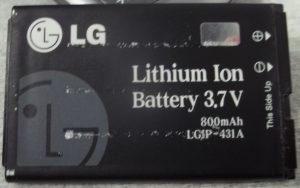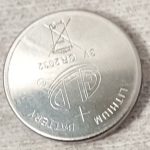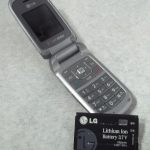Persons involved in the transportation in commerce of lithium batteries are subject to the regulations of at least one – or perhaps all – of the following regulatory agencies:
- The Pipeline and Hazardous Materials Safety Administration (PHMSA) within the U.S. Department of Transportation (USDOT) for any transportation from, through, or to the United States.
- The International Air Transport Association (IATA) for any transportation by air – international or domestic – if the carrier airline is a member of IATA.
- The International Maritime Organization (IMO) for international transportation by vessel.
| Note:Though the dangerous goods regulations of IATA are not authorized for use within the U.S. by USDOT/PHMSA, compliance with its regulations is acceptable since the IATA DGR are based on the Technical Instructions of the International Civil Aviation Administration (ICAO) – and are more strict in some cases. The ICAO Technical Instructions are authorized for use within the U.S. by USDOT/PHMSA. |
Each of these regulatory agencies have very similar regulations applicable to the transportation of lithium batteries. They each, thankfully, also have very similar – but not the same – requirements for the classification of lithium batteries. The classification of a lithium battery for transportation requires knowledge of four things:
- Is it a cell or battery?
- The type of lithium cell / battery.
- Its packaging configuration.
- The amount of lithium in the cell / battery.
- Net weight of cell / battery in the package.
- Number of cell / battery in the package.
- Number of cell / battery in the consignment.
- The condition of the cell / battery.
- The mode of transport.
- Applicable regulations.
Daniels Training Services 815.821.1550 |
The purpose of this article is to identify and explain the process of classifying lithium batteries for transportation by both domestic and international regulations.
Before we start:
Though terms such as “cell” and “lithium ion battery” and “Watt-hour ratings” are used in the same manner by all three agencies, they don’t each clearly identify the source or definition of these terms int their regulations. For example:
- The International Maritime Dangerous Goods Code does not define any of the terms related to lithium batteries.
- The Hazardous Material Regulations of the USDOT/PHMSA define a lithium ion cell or battery and lithium metal cell or battery at 49 CFR 171.8. A few more terms are defined in the packing instructions at 49 CFR 173.185.
- The IATA Dangerous Goods Regulations define each term used in Appendix A and in its Lithium Battery Guidance Document, which it usually updates annually.
The source of all of the terms related to lithium battery transportation, in the regulations and this article, have their origin in the United Nations Manual of Tests and Criteria, 5th revised edition.
Battery v. Cell:
A battery is two or more cells electrically connected and fitted with devices for use. A single cell lithium battery is considered a cell. Units commonly referred to as battery packs, modules, or battery assemblies are batteries for the purposes of these regulations if their primary function is to provide a source of power to a piece of equipment.
A cell is a single encased electrochemical unit (one positive and one negative electrode). A cell for the purposes of the transportation regulations will be managed as a cell regardless if it is identified as a battery or a single cell battery outside of the transportation regulations (e.g. its retail label).
A cell for the purposes of the transportation regulations will be managed as a cell regardless if it is identified as a battery or a single cell battery outside of the transportation regulations (e.g. its retail label).
A button cell or battery is a round small cell or battery whose overall height is less than the diameter.
The distinction between a cell and battery is critical when determining the applicable packing instructions (see Lithium Content below). However, throughout the regulations – such as in the selection of the proper shipping name (see Battery Configuration below) – the term battery is also meant to apply to a cell.
Type of Lithium Battery:
There are two types of lithium batteries.
Lithium metal batteries are generally primary (non-rechargeable) that have lithium metal or lithium compounds as an anode. They are generally used to power devices such as watches, calculators, cameras, and temperature data loggers. Lithium alloy batteries are a type of lithium metal battery.
Lithium ion batteries, or Li-ion batteries, are a secondary (rechargeable) battery commonly used in consumer electronics such as mobile phones and laptop computers. Lithium ion batteries do not contain metallic lithium. Lithium polymer batteries are a type of lithium ion battery.
Battery Configuration:
There are three configurations for lithium batteries identified in the transportation regulations.
- Batteries packed by themselves without the equipment they are meant to power. This may be one battery or several in a single package. The shipping descriptions used by all three agencies are:
- UN3090, Lithium metal batteries including lithium alloy batteries, 9
- UN3480, Lithium ion batteries including lithium ion polymer batteries, 9
| Note:A lithium battery packed by itself is subject to the most stringent regulation. |
2. Batteries packed with, but not contained in, the equipment they are meant to power. The shipping descriptions used by IATA and USDOT/PHMSA:
- UN3091, Lithium metal batteries packed with equipment including lithium alloy batteries, 9
- UN3481, Lithium ion batteries packed with equipment including lithium ion polymer batteries, 9
3. Batteries contained in the equipment they are meant to power. The shipping descriptions used by IATA and USDOT/PHMSA:
- UN3091, Lithium metal batteries contained in equipment including lithium alloy batteries, 9
- UN3481, Lithium ion batteries packed with equipment including lithium ion polymer batteries, 9
While both IATA and USDOT/PHMSA have distinct shipping descriptions for lithium batteries packed with equipment and those contained in equipment (though both share the same identification number: UN3091 & UN3481, respectively and are largely packed and shipped in the same manner), the IMO combines these in one shipping description as indicated below.
- UN3091, LITHIUM METAL BATTERIES CONTAINED IN EQUIPMENT or LITHIUM METAL BATTERIES PACKED WITH EQUIPMENT (including lithium alloy batteries), 9
- UN3481, LITHIUM ION BATTERIES CONTAINED IN EQUIPMENT or LITHIUM ION BATTERIES PACKED WITH EQUIPMENT (including lithium ion polymer batteries), 9
Like this article? Subscribe to my Monthly Newsletter No marketing emails! |
Don’t be confused by the absence of the term cell in the available proper shipping names. The regulatory agencies expect a shipper of a lithium cell to classify it according to one of the above configurations.
Amount of Lithium in the Cell or Battery:
The amount of lithium in a cell or battery is measured differently for lithium ion and lithium metal batteries. For both, it is critical in determining how, or if, it will be subject to the regulations. The threshold amount is the same for all three regulatory agencies.
The following batteries are subject to more strict levels of regulation due to their lithium content.
Lithium metal battery:
- A cell containing >1 gram of lithium
- A battery containing >2 grams of lithium
Lithium ion battery:
- A cell with a watt-hour rating of >20 Wh
- A battery with a watt-hour rating of >100 Wh
| Note:Lithium ion batteries above the threshold of 20 Wh or 100 Wh must be marked with their watt-hour rating if manufactured after December 31, 2011. |
The batteries that follow are at or below the threshold amount and are subject to a lower level of regulation.
Lithium metal battery:
- A cell containing ≤1 gram of lithium
- A battery containing ≤2 grams of lithium
Lithium ion battery:
- A cell with a watt-hour rating of ≤20 Wh
- A battery with a watt-hour rating of ≤100 Wh
| Note:Lithium ion batteries at or below the threshold of 20 Wh or 100 Wh must be marked with their watt-hour rating if manufactured after January 1, 2009. |
If a cell or battery is to be transported by highway or rail within the U.S., its lithium content may be higher and still be subject to a lower level of regulation. These are identified below.
Lithium metal battery:
- A cell containing ≤5 grams of lithium
- A battery containing ≤25 grams of lithium

Lithium ion battery:
- A cell with a watt-hour rating of ≤60 Wh
- A battery with a watt-hour rating of ≤300 Wh
This table summarizes the lithium content thresholds.
| Status | Lithium Ion Battery (Watt-hour (Wh) Rating) | Lithium Metal Battery (Lithium Content (g)) | ||
|---|---|---|---|---|
| Battery | Cell | Battery | Cell | |
| Subject to "smaller battery exception" | Does not exceed 100 Wh | Does not exceed 20 Wh | Does not exceed 2 g | Does not exceed 1 g |
| Subject to full regulation | Exceeds 100 Wh | Exceeds 20 Wh | Exceeds 2 g | Exceeds 1 g |
| Subject to "smaller battery exception" by highway or rail | Does not exceed 300 Wh | Does not exceed 60 Wh | Does not exceed 25 g | Does not exceed 5 g |
Net Weight of Cell or Battery in the Package:
While especially important if the transportation mode is by aircraft, all modes have limits on the net weight of lithium cells or batteries for certain types of packages. For example, the IATA packing instructions for a lithium ion battery packed alone subject to Section IA of Packing Instruction 965, limit the net weight of lithium cell or battery per package to 35 kg.
The net weight does not consider the weight of the equipment (if there is any), just that of the battery. You must, however, consider the weight of the entire battery and not just the weight of the lithium within the battery.
The Number of Cells or Batteries in the Package:
Related to, but distinct from, the previous classification characteristic (the net weight of the cell or battery in the package), the number of cells or batteries in each package is limited by some packing instructions and affects hazard communication in others:
- IATA Packing Instruction 968, Section II limits lithium metal cells of more than 0.3 g but not more than 1 g to 8 per package.
- USDOT/PHMSA Hazardous Materials Regulations at 49 CFR 173.185(c)(3) assigns the use of the lithium battery mark based on – among other criteria – the number of batteries or cells in the package.
The Number of Cells or Batteries in the Consignment:
Each regulatory agency’s definition of a “consignment” differs slightly, but they all agree it is the entire shipment of packages offered by a shipper to a carrier at one time. Other than those for lithium batteries, I am aware of no other regulations that limit or create additional requirements for the transport of a hazardous material or dangerous good based on the amount in a consignment. But lithium batteries are unique and here is an example of it. Once again the IATA Dangerous Goods Regulations lead the way in severity, limiting the number of packages in a consignment if they contain certain types of lithium batteries in certain configuration. The Hazardous Materials Regulations of USDOT/PHMSA base the use of the lithium battery mark – in part – on the number of lithium battery packages in the consignment.
The Condition of the Cell or Battery:
In short, a lithium cell or battery that is damaged, defective, or part of a recall (known as a DDR), or one that is being shipped for recycling or disposal is prohibited from transport by air and will be subject to more strict regulation by all other modes.
Interested in site specific training at your site that covers this topic, and more! Ask me about my Onsite Training |
The Mode of Transport:
Without question, the most strict mode of transport (whether or not it is lithium batteries) is by air. The next most strict is be vessel. With highway and rail being the least strict.
The Applicable Regulations:
Usually – but not always – determined by the mode of transport. If the transport is by highway or rail it will be subject to the domestic regulations of USDOT/PHMSA. If transport is by air anywhere in the world it will likely be subject to the IATA Dangerous Goods Regulations since that is what is used by the world’s airlines. However, UPS allows for an option to comply with the IATA DGR or the USDOT/PHMSA Hazardous Materials Regulations if the transport is entirely within the U.S. Any transport by vessel in international waters is subject to the IMDG Code. Vessel transport within the U.S. or directly from one U.S. state/territory to another (e.g., Puerto Rico to Florida), however, may comply with the domestic regulations of USDOT/PHMSA.
One final factor in the classification of lithium cells or batteries is related to the determination of the applicable regulations. If the transport is to be by air according to the IATA Dangerous Goods Regulations, then the shipper must consider variations by either their carrier (i.e., the operator) or the country of origin or destination (i.e., the state) of the lithium battery shipment. These operator or state variations may create an entirely different compliance requirement than that based solely on the regulations. For example, neither FedEx or UPS allow for the transport of lithium batteries packed alone subject to the Section II Packing Instructions (965 for lithium ion or 968 for lithium metal) no matter if the batteries meet the requirements of that packaging exception.
Contact me with any questions you may have about the transportation of hazardous materials by air, highway, vessel, or rail International and Domestic Daniels Training Services 815.821.1550 |
Are you done? Not nearly! But now you can start. From here the challenge is to comply with the applicable packing instructions – including packaging exceptions, special provisions, and hazard communication methods for each cell or battery based on its classification.
Please contact me if you have any questions about the classification, packaging, labels, markings, and shipping papers for consignments of lithium batteries.

